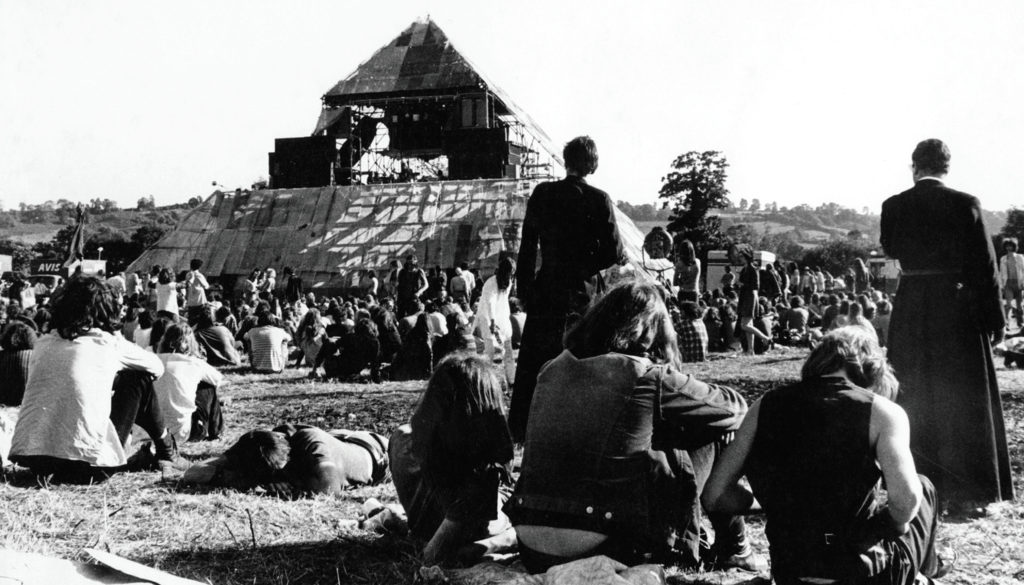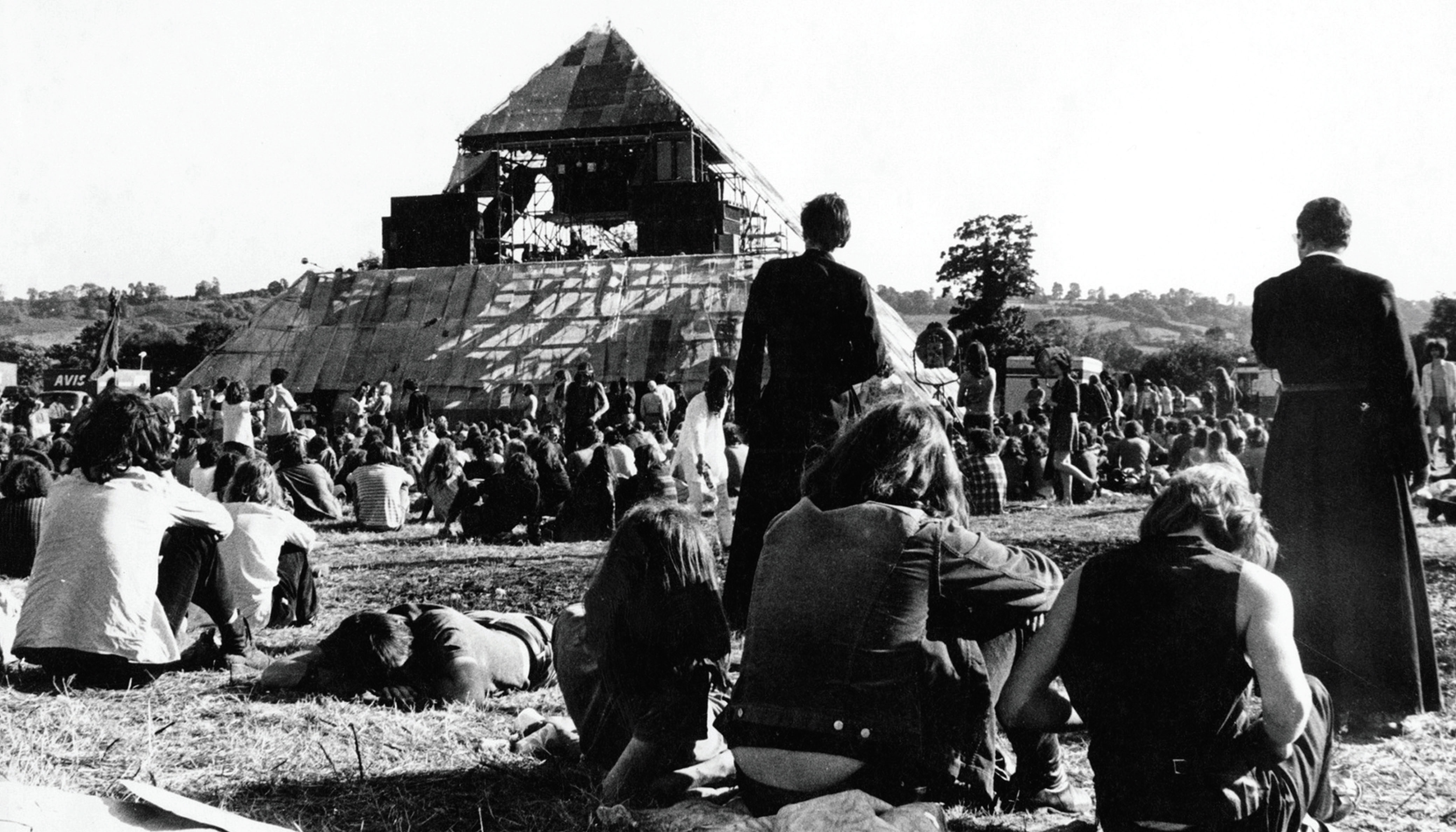
A Sufi master on taking responsibility for our world
In answer to a question from a thirty-one-year-old person, “What advice do you have for people my age in dealing with a world that tells us we are nothing but material mechanisms, and has almost no concept of the soul?”
CHAPTER ONE
I grew up in an England still dreary in the post-war years. It was a grey world aspiring to middle-class materialism—a TV, a washing machine, even a car! Then in the mid to late sixties, another color entered the spectrum of consciousness. The Beatles went to India to meditate with the Maharishi, and orange-robed Hare Krishna devotees could be seen dancing and chanting on Oxford Street in London. Spirituality in all of its flavors and colors began to arrive in the West.
This awakening was part of my adolescence. When I was sixteen I began to practice Zen meditation, and I experienced an inner dimension of emptiness completely different from the world of my schoolboy classrooms. When I was eighteen I practiced hatha yoga (until I damaged my right knee from sitting too long in the lotus position) and became macrobiotic, learning to bake my own unleavened bread. I studied sacred geometry and built geodesic domes. I attended one of the first Glastonbury Festivals, where the pyramid stage was supposed to transmit spiritual vibrations. Then, when I was nineteen, I met my spiritual teacher, a white-haired Russian lady who had just come back from India, where she had been trained as a Sufi master. My heart became awakened to a love I never knew existed. Many friends at the time followed similar paths—exploring Buddhist meditation in the monasteries of South East Asia, reading Tibetan texts, chanting Hindu mantras, or whirling with Sufi dervishes. We felt that we were part of a spiritual movement that was going to change the world. Something was alive in a new way; a new spark of consciousness was present.
Looking back over almost half a century, I can see how our journey, the story of my generation, was to help bring these practices and teachings to the West, to help something come alive in our materialistic Western consciousness. Meditation groups formed, ashrams were built, and many of us practiced ways to access different states of consciousness. We were naïve and optimistic, expecting this infusion of spiritual consciousness to change the world. Sadly, or more realistically, while it changed our world, the world around us only became more enamored of materialism, technology, and the “toys of triviality.” And, as the Seventies moved into the Eighties and then the Nineties, many of the gurus became corrupted, mainly by sex or money, and many sincere seekers disillusioned. The innocence of those early years faded into the harsher light of daily life.
But something remained. There was a shift in consciousness—this new color in the spectrum remained—along with the various spiritual practices and texts that had come from the East. Those of us who remained true to our practice, who lived our meditation and spiritual values, held this shift in consciousness, and integrated it into our daily life. We listened to our dreams and our hearts, we opened to inner experiences beyond the physical. We lived the story of our soul.
Then, at the beginning of the twenty-first century, something within me shifted, and I was shown how spiritual values belong not just to the inner journey of the individual, but have a vital part to play in the outer world. Traditionally the seeker turns away from the outer towards the inner, seeking the truth that, for example, in Sufism can only be found within the heart. Through meditation and prayer, going deep within, we find something beyond the illusions of the outer world—we dip into love’s infinite ocean. We experience the reality of the Self and the oneness that belongs to all that exists—what the Sufis call “unity of being,” and for the Buddhist is experienced as Buddha nature with its awareness of the interdependence of existence (“dependent co-arising”). But I began to realize that this “consciousness of oneness” was needed in our outer world, that our world was suffering from a misguided consciousness of separation, which is the consciousness of the rational self and ego: we are separate from the Earth and separate from each other.
This focus on awakening to oneness gradually evolved into my Spiritual Ecology work of recent years, giving a spiritual perspective to our present ecological crisis. When I began this work over a decade ago, “oneness” was still a fringe “spiritual” idea. Spirituality and ecology were rarely associated. Environmentalists thought spiritual practitioners were “new age” and not activist enough, while apart from a few “engaged Buddhists” and others, spiritual practices and teachings were focused on self-development and the individual inner journey. But I am very happy that in the last few years, oneness, interconnectivity, or what the Buddhist monk Thich Nhat Hanh calls “interbeing,” has become much more part of the mainstream, and central to understanding the ecological crisis—that we need to respond from an awareness of the Earth as a living organic whole.
As Pope Francis expressed so beautifully in his encyclical On Care for our Common Home, we need to listen to “the cry of the earth and the cry of the poor.” We can no longer afford to live in a way of exploitation and division. We need to take full responsibility for our world and work together to return to a balanced and sustainable way of life for humanity and all of creation—to care for both the soil and the soul.

CHAPTER TWO
As I have mentioned, condensed into these paragraphs is almost half a century’s journey of living, and also holding, a quality of consciousness radically different to that of the environment I was born into. In its broadest terms this consciousness is the awareness of a spiritual reality whose values are very different to the ego-driven material focus of our present civilization.
Sadly the materialistic values of the Fifties have now morphed into a global monster, exploiting and ravaging the Earth in a way that can only result in mutual self-destruction. Still, while there are those continuing this nightmare of “business as usual”—the global corporations and politicians who pursue only economic growth or greed—there are others who have real “care for our common home,” who hear the cry of the Earth and the pressing need to live from a place of unity. Maybe we have already passed the “tipping point” of unforeseen ecological consequences: temperatures rising, rivers and oceans polluted, and air made toxic. But spiritual consciousness still has a vital role to play as our world spins out of balance.
Yet I believe it is no longer enough just to hold this awareness—we have to bring it into action. Many people who read my book Spiritual Ecology: The Cry of the Earth responded, “What should I do?” The next chapter of this story of spirituality must bring these values, this quality of consciousness, into action to help heal and restore our dying world. I firmly believe that this is the calling for the next generation, for those who have the energy and passion to act from a place of service and love for the Earth—and, especially important, from a place of unity. (Spiritual Ecology: The Cry of the Earth is a collection of essays by spiritual teachers, scientists, and others, that proposes the need for a spiritual response to our present environmental crisis.)
This is the challenge facing those of the millennial generation who sense that life is something more than the accumulation of “stuff,” who have heard the cry of the Earth, which is also the cry of their own soul. How can we help the world in this time of transition? How can we participate creatively in our lives and our communities? There is much work to be done, a work founded upon the principles of oneness and unity, a work that recognizes that all of life is sacred and whole. Life is calling to us and it desperately needs our attention; around us are what Thich Nhat Hanh calls “bells of mindfulness,” which we need to hear and then respond to—hear with our hearts and respond with our hands.
There are many ways to participate, to work towards ecological wholeness, from forming a community of urban gardeners, to developing new economic models based on generosity and sharing rather than acquisition, such as “pay it forward.” It is for each person to find the community and initiative that speaks most to their nature, their unique offering. And central to this work is that we are here to help each other. And I firmly believe that—while some global initiatives are vital, like reducing carbon emissions—most initiatives should be small groups of people coming together in different ways. Governments and politicians are too bound to the idea of continued “economic growth” to commit to real change. Instead the world needs to be regenerated in an organic, cellular way, the way life recreates itself.
I also believe that it is important for anyone committing to this work to develop their own spiritual practice—especially helpful is a meditation practice that is done every day. It can be a mindfulness meditation, watching the breath, the Christian practice of centering prayer, or a Sufi heart meditation. It could also be walking in a sacred manner, being aware of our connection to the sacred Earth with every step we take. What matters
is that our practice connects us to what is most deep and enduring within us, a Source beyond the illusions of the ego and the many distractions of the outer world. This practice can support and protect us, and inwardly guide us in our work.
And if I have learned anything from my journey, I’ve learned what matters most is love. Love is the most powerful force in creation, and it is our love for the Earth that will heal what we have desecrated, that will guide us through this wasteland and help us to bring light back into our darkening world. As in the words of the poet Wendell Berry, “The world…can be redeemed only by love.” Love links us all together in the most mysterious ways, and love can guide our hearts and hands. And the central note of
love is oneness. Love speaks the language of oneness, of unity rather than separation. ♦
Reprinted here from Llewellyn Vaughn-Lee’s essay “Spiritual Principles in Action” from Journeys and Awakenings: Wisdom for Spiritual Travelers (2019) edited by Robert Corman and others, by kind permission of Sacred Spirit Books, an imprint of Monkfish Book Publishing Company, Rhinebeck, New York
From Parabola Volume 44, No. 3, “Mercy & Forgiveness,” Fall 2019. This issue is available to purchase here. If you have enjoyed this piece, consider subscribing. Four times a year Parabola has explored the deepest questions of human existence. Without your support, we would cease to exist. Please consider helping us by making a donation.
